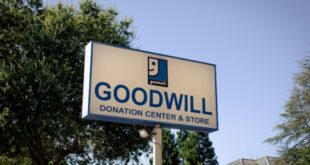LA economist tells Inland real estate brokers that the economic slowdown is over and that it’s time to focus on the region’s bright economic future, with logistics leading the way. Later, Inland industrial brokers paint a bright picture of that sector.
Some commercial real estate professionals gathered Thursday in Ontario to hear about the Inland Empire’s economic future.
Unless for some reason they wanted to hear bad news, they must have enjoyed what they heard.
Riverside and San Bernardino counties are in the midst of a strong economic recovery, with 2015 looking promising and 2016 likely being even stronger, said Chris Thornberg, economist and founding partner of Beacon Economics LLC in Los Angeles.
“It’s time for the Inland Empire to move out of crisis mode and start focusing on planning for the future,” said Thornberg, the keynote speaker at NAIOP Inland Empire’s annual Mid-Year Market Review. “The region is in the midst of a real recovery, and it’s on the verge of enormous growth.”
Thornberg told the gathering of 160 brokers and developers at the Ontario Convention Center that the two-county region has moved beyond the recession: it experienced 3.7 percent economic growth during the past year, its retail growth is starting to outpace the most optimistic forecasts and its housing market, though sluggish of late on the sales side, is getting stronger.
“Housing affordability remains the biggest economic problem in California,” Thornberg said. “The housing market is getting better, but it’s still not close to where it was in 2003, when it was at its peak.”
California’s economy is also showing signs of a comeback: the day after Thornberg’s remarks, the state Employment Development Department announced that unemployment statewide dropped to 7.6 percent in May, the lowest rate recorded since 2008 when the recession kicked into gear.
“We’re adding jobs by the month,” said Thornberg, who called himself a “big fan” of the Inland region. “You see it in the headlines all the time. That’s not a sign of a market in recession.”
The Inland Empire’s population is expected to grow by 1.5 million people during the next 20 years, more than any other market in the state except for Los Angeles and well ahead of San Diego and Orange counties.
Population growth on that level will create economic growth, and much of that growth will be brought along by logistics, the Inland Empire’s main economic driver along with housing, Thornberg said.
“The question is what is the next stage of growth in the area, and what is the Inland Empire going to look like in 10 years,” Thornberg said. “There’s no question that logistics will still play a major role in the Inland economy. It won’t be the only thing, but it will still be very important.”
Thornberg then detailed why the warehouse-distribution sector is so important to the Inland Empire, and why the region should be encouraging, not resisting, more logistics development.
Logistics creates well-paying blue-collar jobs in a region where a lot of people have a high school education or less. It also produces a solid multiplier effect, not only in individual communities but throughout the entire region.
“A lot of people think logistics doesn’t have a big impact on a local economy, but that really isn’t true,” Thornberg said. “It brings a lot into the economy.”
For example, a 500,000-square-foot high-tech warehouse logistics operation will create about 485 jobs while it’s being built and pump about $43.3 million into community where it’s being built, according to Beacon Economics data.
Also, such a facility will have a $7.5 million impact outside its immediate community but still within the Inland Empire it’s being built.
After the building is occupied, over time a logistics facility of that size will generate about 300 jobs and have an economic impact of nearly $32 million, both locally and throughout the two-county region, according to Beacon.
Because the Inland region will land some – but not many – manufacturing jobs during the next five to 10 years, it still must make logistics a centerpiece of its economy.
“Manufacturing is not the job creator that it once was,” Thornberg said. “China is buying plants in the United States to manufacture automobile parts. When you see that, you know the global market has changed.”
Though hardly spectacular, the logistics industry does pay reasonably good wages, according to the U.S. Bureau of Labor Statistics.
In 2012, the average warehouse-distribution job in the Inland Empire paid $41,225. By comparison, the private sector as a whole paid an annual salary of $37,130, and that gap of about $4,000 was steady every year back to 2008, according to the bureau.
“Are they great-paying jobs? No, they’re not,” Thornberg said. “But they’re decent-paying jobs that get people into the middle class, and we should be trying to get more of them. We should not be pushing those jobs away, even though we do have to focus on attracting other industries.”
Thornberg is a frequent commentator in the national media, both broadcast and print, and his forecasts carry some weight. He was one of the few economists to predict the sub-prime mortgage crisis and subsequent economic collapse, now called the Great Recession, that started in late 2007 and exploded the following year.
“I was on a panel with Chris in 2007 when he was making those predictions, and everyone was wondering what he was talking about,” said Stephen Batcheller, a partner with Panattoni Development Co. in Newport Beach. “No one believed him. Now I think everyone listens to him.”
Immediately following Thornberg’s remarks, four veteran industrial brokers – Jeff Cole of Cushman & Wakefield, William Heim of Lee & Associates, Peter McWilliams of Jones Lang LaSalle and Kim Snyder of Prologis – took part in a panel discussion on the state of the Inland industrial market.
All four agreed that the market is in high gear and probably hasn’t hit the peak of its current cycle.
“Since 2005, about 110 million square feet of industrial space has been built in the Inland Empire, and 109 million square feet of that has been absorbed,” Heim said. “In this market, if you build something industrial, it will get leased.”
 IE Business Daily Business news for the Inland Empire.
IE Business Daily Business news for the Inland Empire.


